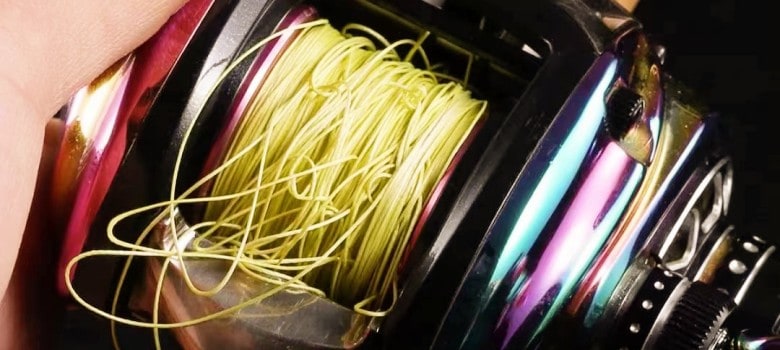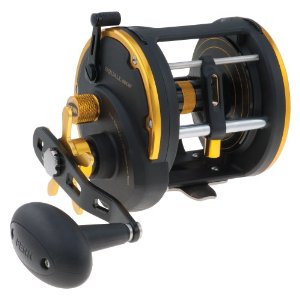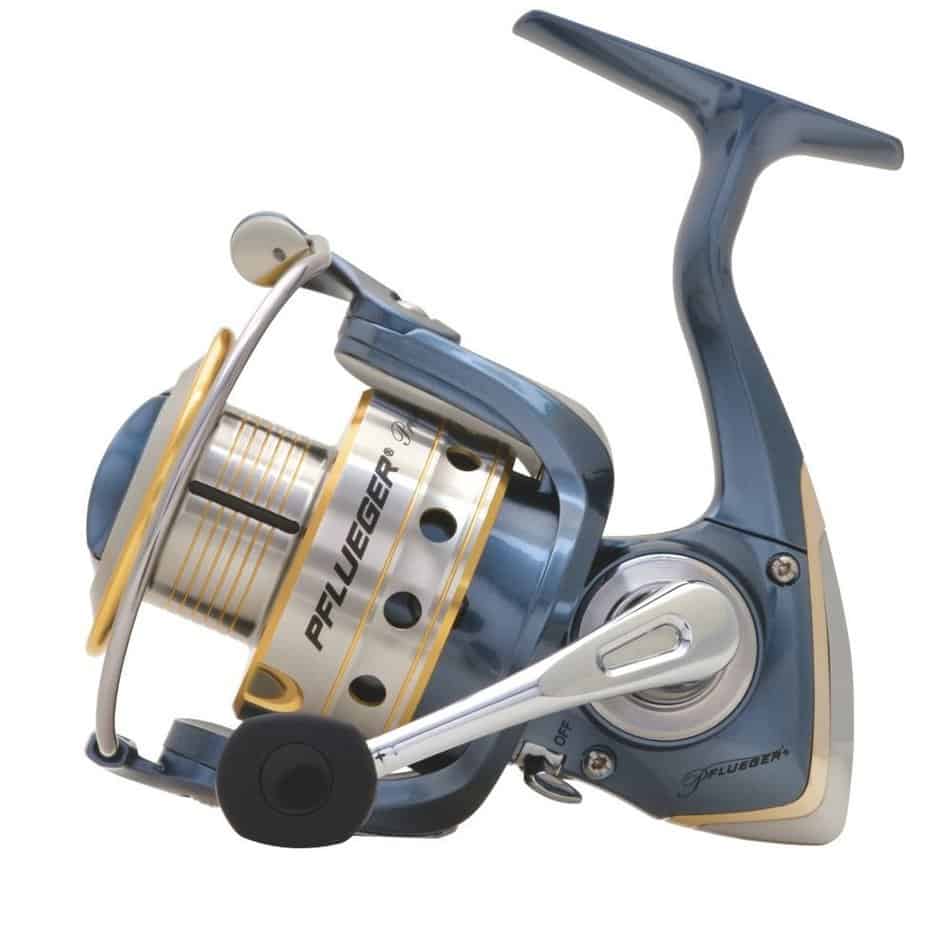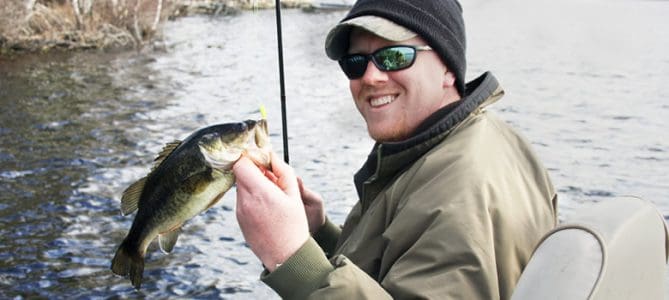If you buy via a link on this page, we may receive a commission, at no extra cost to you.Learn more
Baitcasters are a popular option for fishing reels, but for the first-timer, they can provide a frustrating learning experience, causing anglers to ask, “Why does my baitcaster always backlash?” A bird’s nest in your reel will quickly ruin your day on the water, so if you’re asking why your baitcaster always backlashes, you are not alone!
Baitcasters easily backlash because their spool continues to spin after the lure has slowed, causing the line to over-run on the spool. While spinning reels have a stationary spool that releases the line, the spool of a baitcaster rotates as the line is cast. Due to this rotating spool, baitcasting reels operate on a brake system, which depending on the weight of the lure, can be adjusted to ensure the spool stops spinning at the right time.

Adjusting your baitcasting reel and dialing in its brake system will depend on several factors, including the type of lure and type of line. Below, we have detailed the quickest tips to ensure that learning how to use a baitcaster is simple, effective, and fun!
Understanding Your Baitcasting Reel
As we said, a baitcasting reel differs from regular spinning reels since it uses a brake system, usually magnetic or centrifugal brakes on a baitcaster. When you look at your baitcaster, there are three dials or knobs to pay attention to. The first is the drag, which is shaped like a star and usually located at the center of the handle and operates like any other drag system for fishing reels.
The second dial is your brake dial, which is located on the side of the reel, typically opposite the reel handle. The brake dial will include numbers; the higher brake number represents greater resistance against the spool.
The last knob to pay attention to is the spool tension, which is typically a plain, round knob located on the reel-handle side. This small knob helps fine-tune your tension for each particular bait or lure.
Adjusting Your Baitcaster
The moment you’ve been waiting for, adjusting your reel to avoid backlash! Start by turning up your drag, making it more difficult for the line to come off the spool. Next, go to your brakes and turn them to a higher setting. A good rule of thumb: the newer you are to baitcasters, the higher I would turn up the brakes.
Now that you have turned up the drag and brakes, pull out your line and tie on a favorite lure. To test if you’re adjusted to the optimal settings, hold the rod tip at a 45-degree angle and jingle the rod to allow the lure to fall naturally toward the ground. When the lure hits the ground, watch your spool. If it comes to a stop without overrunning any line, you’re ready to fish!
Casting Your Baitcaster
Start with a sidearm cast, and as you cast, lightly press your thumb on the spool of the unwinding line. Although your baitcaster should be adjusted appropriately to avoid backlash, lightly pressing your thumb against the spool is an excellent safety precaution in case of a poor cast. Anglers will refer to this as “thumbing” your line, and it’s a manual way to manipulate tension on the line.
Why Use A Baitcasting Reel?
Though they initially sound confusing, baitcasters offer a few advantages that are difficult to beat. First, the line control of baitcasters makes for more accurate, precise casts- especially into tight areas. Second, since you can manipulate the line with your thumb and use the brake system, baitcasters allow you to land lures softly without spooking fish. Last, and certainly not least, their robust style provides heavier cranking power to pull fish out of debris and weeds that are typical targets of a baitcaster.
How Do I Untangle My Backlash?
Before you start picking through the line with your fingers or unwinding all of your lines, a simple trick will save you time and frustration. When you inevitably run into some backlash (and believe me, it will inevitably happen), press your thumb against the spooled, backlashed line. Now, begin slowly reeling- this will help the line naturally untangle itself. Next, press down on the thumb bar, and pull the line back out of the baitcaster. If needed, repeat these two steps until you are out of your tangled mess.
What Line Is Best On A Baitcaster?
If you’re going with a baitcaster, you better use a braid. First and foremost, braid has no memory compared to monofilament or fluorocarbon line. This is ideal and will help prevent those infamous backlashes. Second, the braid is heavier and perfect for the thick cover that is often the common target of baitcasters. If you’re looking to bass fish with a baitcaster, a braid in the 10-12 pound range is excellent for beginners.
Should A Beginner Use A Baitcaster?
If you’re taking a beginner out on the lake for a day, I recommend having them use a spinning reel. Though baitcasters provide advantages such as precision casting, a beginner would likely overrun the line into a bird’s nest, even with the proper setup.
How Do I Choose A Baitcaster?
In the fishing world, preference is critical, but here are a few things to consider when choosing a baitcasting reel.
Gear ratio: this is labeled with numbers such as “4:1”, “5:1”, or “6:1.” The gear ratio represents a spool’s rotations for each turn of the handle. For example, for a reel with a 4:1 gear ratio, that reel’s spool will rotate four times for every complete turn of the reel handle. Therefore, the higher the gear ratio, the faster that spool will rotate and retrieve the line. Specific gear ratios are conducive to certain lures, but you can’t go wrong with a 5:1 baitcaster, as this ratio is considered “average.”
Spool size: larger fish require a larger line and, therefore a larger spool. With bass fishing, however, you can get away with a lighter line, so a large-sized spool is unnecessary for your baitcaster.
Ergonomics: choose whichever baitcaster feels most comfortable! Hopefully, you will be fishing with your baitcaster all day, so go with the one that fits best in your hand.
Baitcasters vs. Spinning Reels: Which Is Best?
Preference always comes down to the angler, but there is a good reason why you almost always see bass pros using baitcasters: they cast further with more precision and are much better at dragging fish out of heavy cover than their spin-reel counterparts.
However, if you’re looking for a quick method for throwing baits into the water, then you can’t go wrong with a spinning reel. Though they won’t cast with the same accuracy or distance, spinning reels are easy for beginners to handle.
Summary
If you’re new to the world of baitcasting, stay patient. You can avoid backlashes and bird nests by starting with higher tension on your drag and switching to a higher brake setting. As you become more accustomed to the baitcasters tendencies, you can fine-tune your baitcaster with the spool tension to match the weight of each lure. As you continue to adjust and play with your baitcaster’s settings, you will soon be casting further with more precision and power.



